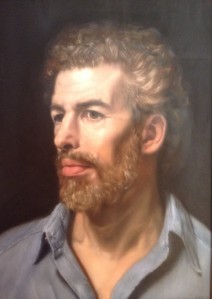In-Sight Publishing
Born to do Math 36 - Metaprimes (Part 2)
Born to do Math 36 - Metaprimes (Part 2)
Scott Douglas Jacobsen & Rick Rosner
April 12, 2017
[Beginning of recorded material]
Rick Rosner: A is 2 and
B is 3. And then in the most compact representation, now, you can go either A^2
or C. In our setup, in the natural numbers, it goes A, B, A^2, 2, 3, 2*2. And
then you can, again, ask whether the next number is C or AB. So at every point,
you’ve got a choice to make between throwing in another prime or throwing in a
composite. There’s always a new set of composites based on the next—
The numbers begin to become defined because
of the relationships you’ve already specified.
Scott Douglas Jacobsen: So I see two things there.
The linguistic representation would probably be conditionals. If this, then
this, and if this, then this, and if this and this, then this and this, and
this continues indefinitely for primes, twin primes, sexy primes, and so on.
RR: The
most compact set of relationships is the natural numbers because there is a
value at every possible node on the number line. Every point on the number line
that is created by adding 1 to the previous number.
SDJ: Why not integers as well? Why not add integers
on the number line?
RR: I
dunno. The next simplest or next most compact representation is probably—is, I
dunno if it the next most compact, but another easily seen representation that
is pretty compact is the primes minus 2. The set of primes without 2 as a prim,
and then your pattern goes A3, B5, C7, A^2 – which is 9, D – which is 11, E –
which is 13, AB – which is 15, and that’s generates the set of odd numbers. If
you carry it out so that whole deal is as compact as it can be.
[End of recorded material]
Authors[1]

Rick Rosner
American Television Writer
RickRosner@Hotmail.Com
Rick Rosner

Scott Douglas Jacobsen
Editor-in-Chief, In-Sight Publishing
Scott.D.Jacobsen@Gmail.Com
In-Sight Publishing
Endnotes
[1] Four format points for the session article:- Bold text following “Scott Douglas Jacobsen:” or “Jacobsen:” is Scott Douglas Jacobsen & non-bold text following “Rick Rosner:” or “Rosner:” is Rick Rosner.
- Session article conducted, transcribed, edited, formatted, and published by Scott.
- Footnotes & in-text citations in the interview & references after the interview.
- This session article has been edited for clarity and readability.
- American Psychological Association. (2010). Citation Guide: APA. Retrieved from http://www.lib.sfu.ca/system/files/28281/APA6CitationGuideSFUv3.pdf.
- Humble, A. (n.d.). Guide to Transcribing. Retrieved from http://www.msvu.ca/site/media/msvu/Transcription%20Guide.pdf.
License
In-Sight Publishing and In-Sight: Independent Interview-Based Journal by Scott Douglas Jacobsen is licensed under a Creative Commons Attribution-NonCommercial-NoDerivatives 4.0 International License.
Based on a work at www.in-sightjournal.com and www.rickrosner.org.
Copyright
© Scott Douglas Jacobsen, Rick Rosner, and In-Sight Publishing and In-Sight: Independent Interview-Based Journal 2012-2017. Unauthorized use and/or duplication of this material without express and written permission from this site’s author and/or owner is strictly prohibited. Excerpts and links may be used, provided that full and clear credit is given to Scott Douglas Jacobsen, Rick Rosner, and In-Sight Publishing and In-Sight: Independent Interview-Based Journal with appropriate and specific direction to the original content.
No comments:
Post a Comment